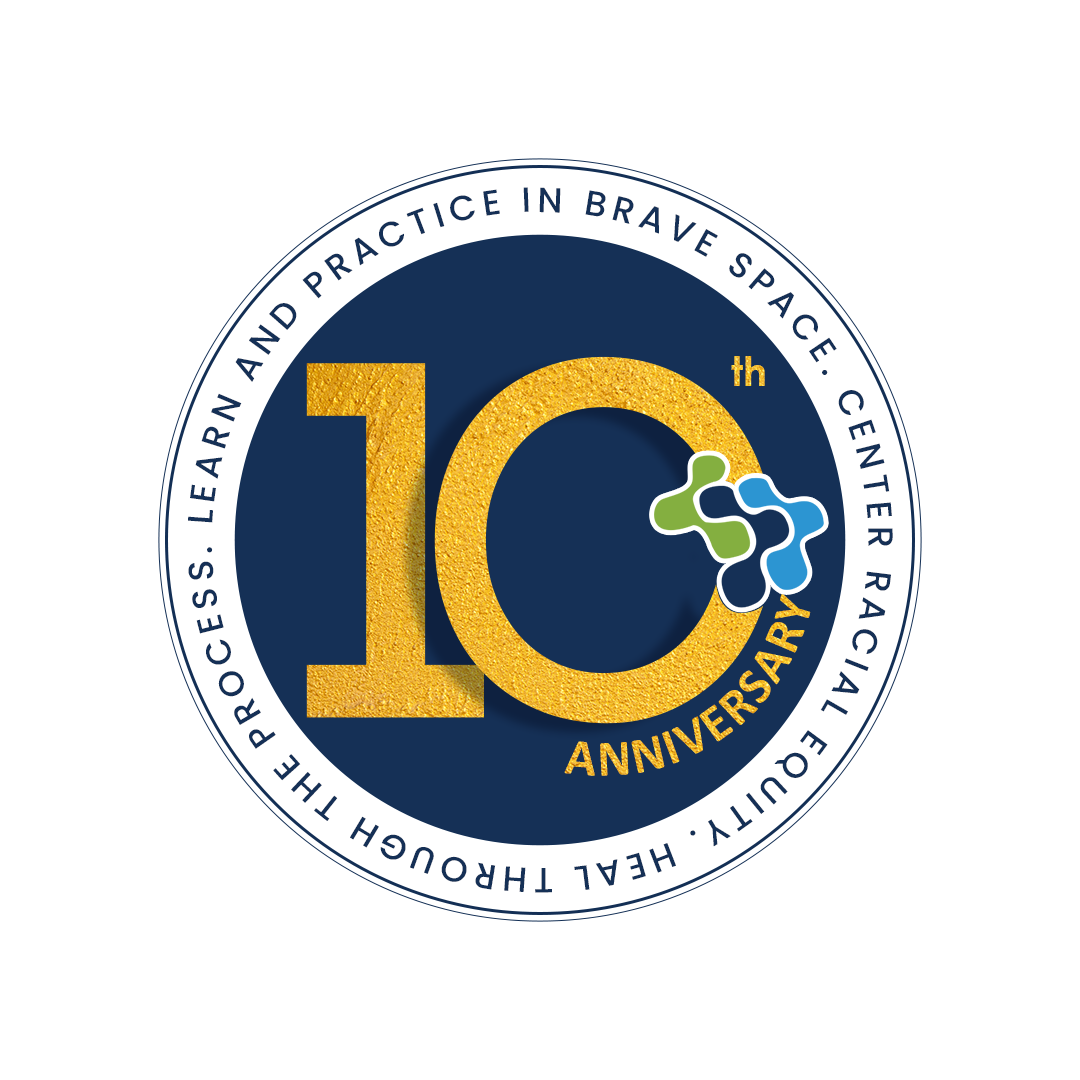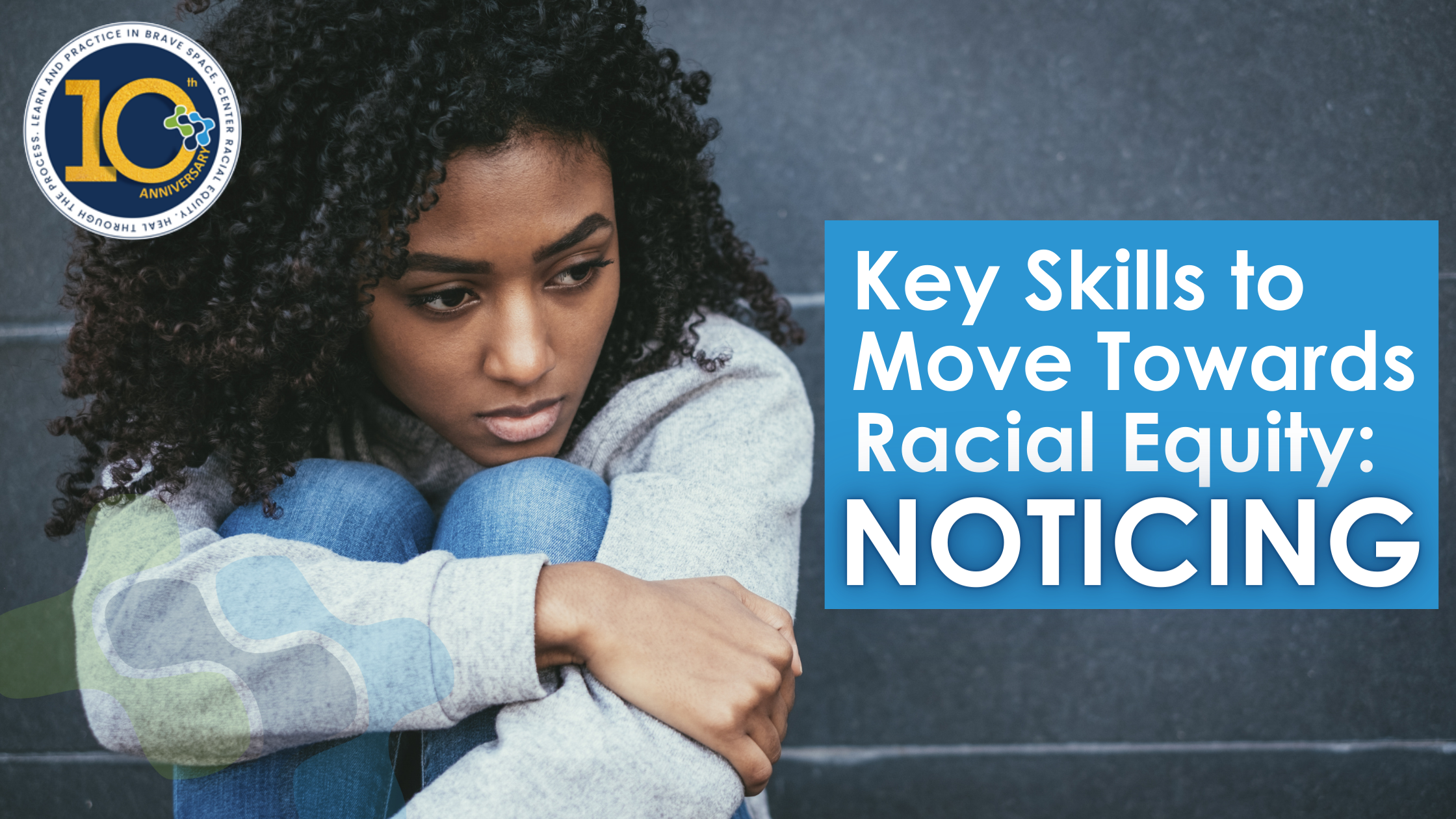“What I saw through the lens of my work was not a tragedy in the killings of unarmed people but the long arc of history. These were predictable outcomes based on the logic of weaponized fear and a legal system designed to associate blackness with dangerousness.“
-Khalil Gibran Muhammed, Professor of History, Race, and Public Policy at Harvard Kennedy School
Your heart is pounding, and your knees are shaking. Your thoughts are rambling and running so fast that you can’t catch to form what you want to say in response. You don’t know how to react or if you should react. You look around to see if anyone is having a similar reaction. You notice that the energy of the room has shifted. Your body is reacting to a statement said by your colleague.
Has this ever happened to you? Of course. Someone said something that moved you in a certain way, and you tried to formulate the “right” response. This is a real thing when discussing race, racial equity, and/or white supremacy.
Often in conversations that center on racial equity, there are missteps, harmful or violent expressions, and/or silence. But, the conversations move full speed ahead without accounting for what is happening in the room. It does not stop to notice.
Noticing is an important skill to hone as you move towards racial equity. It is the process of sensing an energetic shift, feeling when something doesn’t feel right or aligned with racial equity. Noticing gets you into the feeling of what is just. It conjures up your body’s intuition and feelings as powerful indicators. So, yes, when something doesn’t feel right or aligned with racial equity. Notice it.
In our culture, just saying “notice” may feel foreign. White supremacist culture is not rooted in bringing your full human self forward. So, it is not surprising that you may feel a negative reaction to “feeling.”
What can the practice of noticing look like?
1. Body Awareness – Body Scan
Get clear with what your body is trying to communicate. Your body shares what it needs constantly. To begin to get greater clarity on your body, begin to do a body scan.
A body scan is a slow and gentle scan from the top of your body to the lower part of your body as you take regulated breaths. As you do this more frequently, you will become in tune with your feelings and the messages your body is telling you. When you complete your scan, ask yourself:
What do I need to express that supports my body?
What is the reason for my body response?
An example of a body scan can be found here.
2. Be Still and Okay with Silence
Often during racial equity conversations, there is a rush and unrealistic pace. There is no room for stillness and silence during the learning and discovery. So much can be learned by what is not said and by checking the climate of the space.
What is the energy of the space after our conversation?
Is there anything that needs to be said?
What are the expressions around the room?
3. Journal Your Experience
We use journaling as an important reflective tool. After a conversation or meeting, take time to reflect on the opportunity to identify what you noticed during the conversation or meeting. Here are some starting prompts:
How was my body reacting? What did this reaction mean?
What was the energy of the room?
What is an important response that I need to share?
Noticing requires time to reflect and process to provide information. It requires practice.
What are other ways that may be helpful in practicing noticing?
Please share your thoughts.


